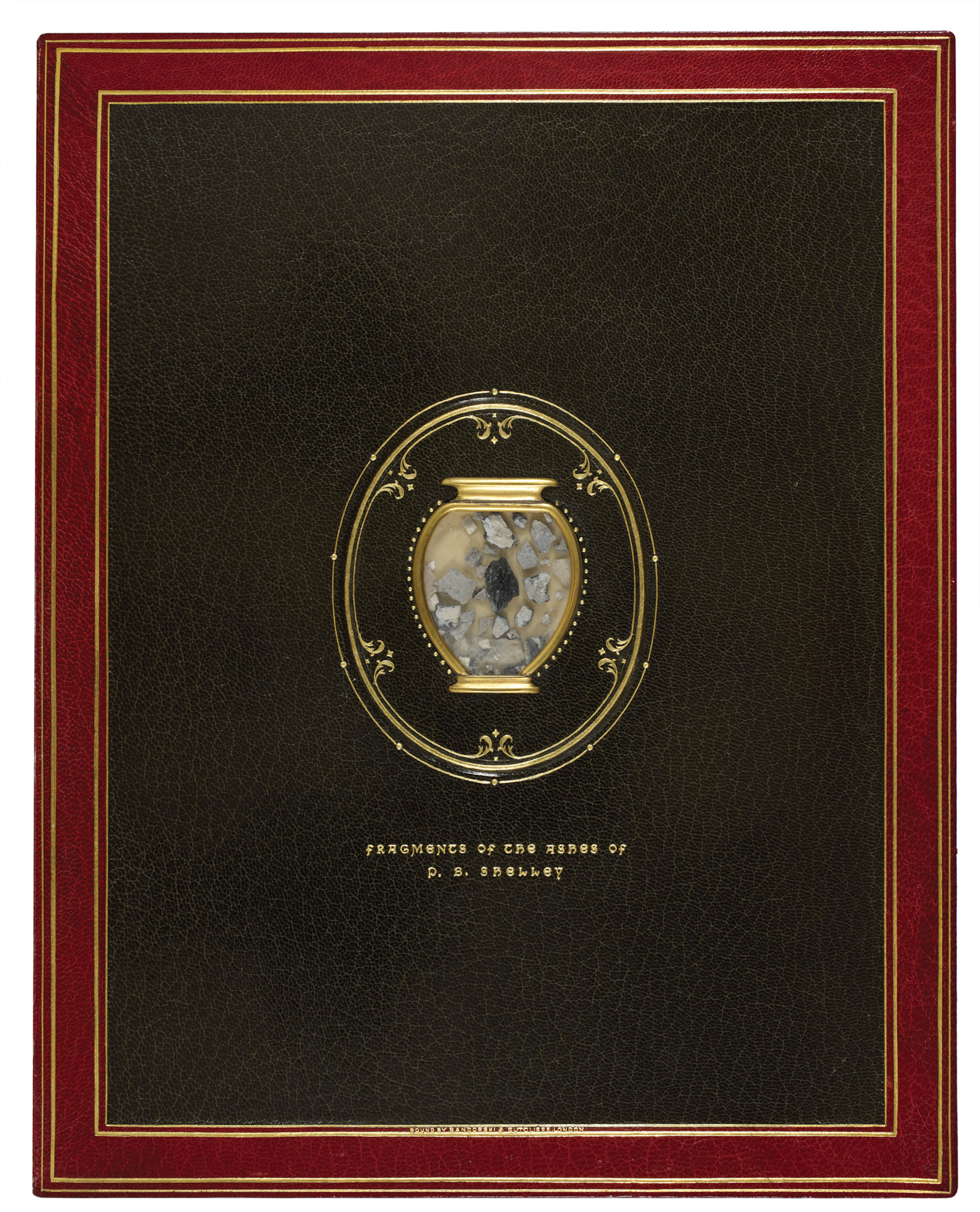Skin Book
The body and the page
Deborah Lutz
Books can be a bit like boxes. Open their lids and slip in a fern or flower to be pressed, a letter or a clipped article. Volumes that hold objects are reminders that books themselves are things that can call on all the senses. Their smell, their texture, their wear tell the reader something about their biography. Carrying traces of their pasts, in certain cases even residue of bodies that have handled them—sweat, saliva, blood—books are like relics of a secular, everyday sort. Or like reliquaries, when the things stuck in them matter more than the pages with their words.

The notion of the book-as-container was especially pervasive in the nineteenth century, during the heyday of the commonplace book, the album, and the souvenir book. A nineteenth-century book-receptacle at the British Library vividly illustrates the way flesh, paper, and ink can meld more thoroughly than through ordinary reading (hands turning pages, pressing open boards).[1] Created by scholar and bibliophile Thomas Wise, the large tome, bound in red levant morocco, is entitled Percy Bysshe Shelley: His Last Days Told by his Wife, With Locks of Hair and Some of the Poet’s Ashes. A kind of album of death, the keepsake encases letters and official documents that describe Percy Shelley’s demise and the afterlife of his remains. Set inside the front cover are two glass cavities, visible when the book is opened; one contains a lock of Shelley’s hair and the other a curl from the head of Mary Shelley, his widow. In an urn-shaped chamber in the back cover is a pinch of Shelley’s ashes and fragments of his skull.[2] There is something emphatic about this artifact, something excessive in its reiteration of meaning on different levels of representation—through language, inscription, hair, charred corpse, bone. Written proof is somehow not sufficient to attest to this life and its end; parts of the thing itself must be included as well.
While Shelley’s death was in many ways exceptional, his wandering corpse parts, and their framing and binding, were less so. He was just short of thirty when the schooner he was manning went down in a storm in the Gulf of Spezia on 8 July 1822. The shock of his sudden loss was compounded by the difficulty in locating and identifying his body—ten days passed before the badly decomposed corpse washed up on the shore along with those of his two companions. Shelley had to be identified by his clothing and by a volume of Keats’s poems tucked into his jacket pocket and pressed open as if he had been reading as the storm hit. Worse was the decision by the Italian quarantine authorities that the corpse be immediately buried on the coast where it was found. Cremation, rare for the time, was the only way the Italian authorities would allow the body to be moved from its original resting place, and a few weeks after the initial burial, Shelley’s friends Edward Trelawny, Lord Byron, and Leigh Hunt arranged for health officials to incinerate his corpse in a portable furnace on the beach at Viareggio. Trelawny, the only one of the three who had the stomach to watch the cremation, claimed that Shelley’s heart “remained entire,” and he was able to snatch it from the flames.[3] While most of Shelley’s ashes were buried in Rome’s Protestant cemetery, where Keats was interred, Mary took the heart (or a small pile of ashes, according to some sources) back to England. She stored whatever was left of it in a large-format, paperbound copy of Shelley’s Adonais, now at the Bodleian Library, in a page torn out and folded in four (or wrapped in silk, some accounts report). While the remains of the heart were eventually buried with his son, many Shelley relics can still be found in museums and archives, including parts of his skull in the Pforzheimer Collection at the New York Public Library, and fragments of his jaw at the Keats-Shelley Memorial House in Rome. The tragic, sensationalistic nature of Shelley’s early death and the relative disembodiment of this demise might go some way toward explaining the need, as evidenced in the British Library volume, to curate a little museum or archive of mourning. Wise remarked that the “tiny heap of Shelley’s ashes” set into the rear doublure “is an object of deep and pathetic attraction.”[4]